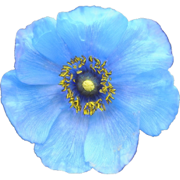Wildflowers of Mount Everest
Sagarmatha National Park
开发者: High Country Apps, LLC
391天19小时
最新版本上线距今
0
近1年版本更新次数
2020-03-29
全球最早版本上线日期
版本: 4.03
版本更新日期
2023-10-27

Wildflowers of Mount Everest
Sagarmatha National Park
更新日志
Updated for iOS 16.7+.应用描述
Vegetation Ecologist Elizabeth Byers, the Flora of Nepal Project, the Department of National Parks and Wildlife Conservation (Nepal), and High Country Apps have partnered to produce the new WILDFLOWERS OF MOUNT EVEREST plant identification app for mobile devices. The app presents over 550 wildflowers, shrubs, and trees likely to be seen along the trails in Sagarmatha National Park, Nepal. More than 2500 beautifully detailed images illustrate the species descriptions, along with bloom period, elevation range, local names, and plant lore. Most of the species can also be seen in the adjacent Makalu-Barun National Park and the upper elevations of the Gauri Shankar Conservation Area, and many are found throughout Nepal at higher elevations. The app does not need an Internet connection to run, so you can use it no matter how remote your wanderings take you.
Though primarily designed for amateur enthusiasts, the breadth of content also includes technical descriptions, scientific name synonymy, and references, making it appealing to more experienced botanists. Users can browse the species list by plant name or plant family to locate a species and access the related information. However, most users will want to rely on the easy-to-use search key to accurately identify plants of interest. Save your favorites to a personalised list and email it to yourself or your friends.
The key's interface is broken down into eleven simple categories: growth form (e.g., wildflower, shrub, vine), flower colour, number of petals, flower type, elevation zone, habitat, leaf arrangement, leaf margin, leaf type, plant height, and flowering month. Select choices in as many or as few categories as you wish. As you do so, the number of species found is displayed at the top of the page. Once done selecting, the click of a button returns a list of thumbnail images and names for potential matches. Users scroll among the species on the list and tap a thumbnail image to access additional photos, descriptions, plant facts and lore.
WILDFLOWERS OF MOUNT EVEREST includes supporting documents with information on the natural history of the Mount Everest region, descriptions of wildflower seasons and best times to visit, insights into how the climate influences the plant communities found here, a map of Sagarmatha National Park as well as detailed instructions on how to use the app. Users will also find an extensive glossary of botanical terms, along with labeled diagrams of leaves, flowers, and inflorescences. Finally, detailed descriptions can be found for each family contained in WILDFLOWERS OF MOUNT EVEREST. Tapping on a family name brings up a list of images and names for all species in the app belonging to that family.
Sagarmatha National Park’s vegetation ranges from the temperate oak-hemlock forests at the lowest elevations, up through the fir-birch-rhododendron forests of the subalpine to the dwarf shrublands and meadows of the alpine, and on upward to scattered cushion plants at the highest elevations. WILDFLOWERS OF MOUNT EVEREST will appeal to individuals of all ages who travel to such areas and are interested in knowing the names, natural history, and cultural importance of the plants that they encounter. WILDFLOWERS OF MOUNT EVEREST is also a great educational tool for learning more about plant communities, botanical terms, and how to identify plants in general.
版本: 4.02
版本更新日期
2023-04-06

Wildflowers of Mount Everest
Sagarmatha National Park
更新日志
Updated Heracleum nepalense, Polygonum molle, Astragalus donianus, Lomatogonium chumbicum, Ranunculus kamchaticus (changed to Oxygraphis polypetala), Impatiens desmantha, and Sabia campanulata.应用描述
暂无应用描述数据
版本: 4.01
版本更新日期
2022-12-21

Wildflowers of Mount Everest
Sagarmatha National Park
更新日志
Updated for iOS 16.2+.应用描述
Vegetation Ecologist Elizabeth Byers, the Flora of Nepal Project, the Department of National Parks and Wildlife Conservation (Nepal), and High Country Apps have partnered to produce the new WILDFLOWERS OF MOUNT EVEREST plant identification app for mobile devices. The app presents over 550 wildflowers, shrubs, and trees likely to be seen along the trails in Sagarmatha National Park, Nepal. More than 2500 beautifully detailed images illustrate the species descriptions, along with bloom period, elevation range, local names, and plant lore. Most of the species can also be seen in the adjacent Makalu-Barun National Park and the upper elevations of the Gauri Shankar Conservation Area, and many are found throughout Nepal at higher elevations. The app does not need an Internet connection to run, so you can use it no matter how remote your wanderings take you.
Though primarily designed for amateur enthusiasts, the breadth of content also includes technical descriptions, scientific name synonymy, and references, making it appealing to more experienced botanists. Users can browse the species list by plant name or plant family to locate a species and access the related information. However, most users will want to rely on the easy-to-use search key to accurately identify plants of interest. Save your favorites to a personalised list and email it to yourself or your friends.
The key's interface is broken down into eleven simple categories: growth form (e.g., wildflower, shrub, vine), flower colour, number of petals, flower type, elevation zone, habitat, leaf arrangement, leaf margin, leaf type, plant height, and flowering month. Select choices in as many or as few categories as you wish. As you do so, the number of species found is displayed at the top of the page. Once done selecting, the click of a button returns a list of thumbnail images and names for potential matches. Users scroll among the species on the list and tap a thumbnail image to access additional photos, descriptions, plant facts and lore.
WILDFLOWERS OF MOUNT EVEREST includes supporting documents with information on the natural history of the Mount Everest region, descriptions of wildflower seasons and best times to visit, insights into how the climate influences the plant communities found here, a map of Sagarmatha National Park as well as detailed instructions on how to use the app. Users will also find an extensive glossary of botanical terms, along with labeled diagrams of leaves, flowers, and inflorescences. Finally, detailed descriptions can be found for each family contained in WILDFLOWERS OF MOUNT EVEREST. Tapping on a family name brings up a list of images and names for all species in the app belonging to that family.
Sagarmatha National Park’s vegetation ranges from the temperate oak-hemlock forests at the lowest elevations, up through the fir-birch-rhododendron forests of the subalpine to the dwarf shrublands and meadows of the alpine, and on upward to scattered cushion plants at the highest elevations. WILDFLOWERS OF MOUNT EVEREST will appeal to individuals of all ages who travel to such areas and are interested in knowing the names, natural history, and cultural importance of the plants that they encounter. WILDFLOWERS OF MOUNT EVEREST is also a great educational tool for learning more about plant communities, botanical terms, and how to identify plants in general.
版本: 3.01
版本更新日期
2022-04-02

Wildflowers of Mount Everest
Sagarmatha National Park
更新日志
Updated for iOS 15.3+.应用描述
Vegetation Ecologist Elizabeth Byers, the Flora of Nepal Project, the Department of National Parks and Wildlife Conservation (Nepal), and High Country Apps have partnered to produce the new WILDFLOWERS OF MOUNT EVEREST plant identification app for mobile devices. The app presents over 550 wildflowers, shrubs, and trees likely to be seen along the trails in Sagarmatha National Park, Nepal. More than 2500 beautifully detailed images illustrate the species descriptions, along with bloom period, elevation range, local names, and plant lore. Most of the species can also be seen in the adjacent Makalu-Barun National Park and the upper elevations of the Gauri Shankar Conservation Area, and many are found throughout Nepal at higher elevations. The app does not need an Internet connection to run, so you can use it no matter how remote your wanderings take you.
Though primarily designed for amateur enthusiasts, the breadth of content also includes technical descriptions, scientific name synonymy, and references, making it appealing to more experienced botanists. Users can browse the species list by plant name or plant family to locate a species and access the related information. However, most users will want to rely on the easy-to-use search key to accurately identify plants of interest. Save your favorites to a personalised list and email it to yourself or your friends.
The key's interface is broken down into eleven simple categories: growth form (e.g., wildflower, shrub, vine), flower colour, number of petals, flower type, elevation zone, habitat, leaf arrangement, leaf margin, leaf type, plant height, and flowering month. Select choices in as many or as few categories as you wish. As you do so, the number of species found is displayed at the top of the page. Once done selecting, the click of a button returns a list of thumbnail images and names for potential matches. Users scroll among the species on the list and tap a thumbnail image to access additional photos, descriptions, plant facts and lore.
WILDFLOWERS OF MOUNT EVEREST includes supporting documents with information on the natural history of the Mount Everest region, descriptions of wildflower seasons and best times to visit, insights into how the climate influences the plant communities found here, a map of Sagarmatha National Park as well as detailed instructions on how to use the app. Users will also find an extensive glossary of botanical terms, along with labeled diagrams of leaves, flowers, and inflorescences. Finally, detailed descriptions can be found for each family contained in WILDFLOWERS OF MOUNT EVEREST. Tapping on a family name brings up a list of images and names for all species in the app belonging to that family.
Sagarmatha National Park’s vegetation ranges from the temperate oak-hemlock forests at the lowest elevations, up through the fir-birch-rhododendron forests of the subalpine to the dwarf shrublands and meadows of the alpine, and on upward to scattered cushion plants at the highest elevations. WILDFLOWERS OF MOUNT EVEREST will appeal to individuals of all ages who travel to such areas and are interested in knowing the names, natural history, and cultural importance of the plants that they encounter. WILDFLOWERS OF MOUNT EVEREST is also a great educational tool for learning more about plant communities, botanical terms, and how to identify plants in general.
版本: 2.03
版本更新日期
2021-04-30

Wildflowers of Mount Everest
Sagarmatha National Park
更新日志
Updated for iOS 14.5.应用描述
Vegetation Ecologist Elizabeth Byers, the Flora of Nepal Project, the Department of National Parks and Wildlife Conservation (Nepal), and High Country Apps have partnered to produce the new WILDFLOWERS OF MOUNT EVEREST plant identification app for mobile devices. The app presents over 550 wildflowers, shrubs, and trees likely to be seen along the trails in Sagarmatha National Park, Nepal. More than 2500 beautifully detailed images illustrate the species descriptions, along with bloom period, elevation range, local names, and plant lore. Most of the species can also be seen in the adjacent Makalu-Barun National Park and the upper elevations of the Gauri Shankar Conservation Area, and many are found throughout Nepal at higher elevations. The app does not need an Internet connection to run, so you can use it no matter how remote your wanderings take you.
Though primarily designed for amateur enthusiasts, the breadth of content also includes technical descriptions, scientific name synonymy, and references, making it appealing to more experienced botanists. Users can browse the species list by plant name or plant family to locate a species and access the related information. However, most users will want to rely on the easy-to-use search key to accurately identify plants of interest. Save your favorites to a personalised list and email it to yourself or your friends.
The key's interface is broken down into eleven simple categories: growth form (e.g., wildflower, shrub, vine), flower colour, number of petals, flower type, elevation zone, habitat, leaf arrangement, leaf margin, leaf type, plant height, and flowering month. Select choices in as many or as few categories as you wish. As you do so, the number of species found is displayed at the top of the page. Once done selecting, the click of a button returns a list of thumbnail images and names for potential matches. Users scroll among the species on the list and tap a thumbnail image to access additional photos, descriptions, plant facts and lore.
WILDFLOWERS OF MOUNT EVEREST includes supporting documents with information on the natural history of the Mount Everest region, descriptions of wildflower seasons and best times to visit, insights into how the climate influences the plant communities found here, a map of Sagarmatha National Park as well as detailed instructions on how to use the app. Users will also find an extensive glossary of botanical terms, along with labeled diagrams of leaves, flowers, and inflorescences. Finally, detailed descriptions can be found for each family contained in WILDFLOWERS OF MOUNT EVEREST. Tapping on a family name brings up a list of images and names for all species in the app belonging to that family.
Sagarmatha National Park’s vegetation ranges from the temperate oak-hemlock forests at the lowest elevations, up through the fir-birch-rhododendron forests of the subalpine to the dwarf shrublands and meadows of the alpine, and on upward to scattered cushion plants at the highest elevations. WILDFLOWERS OF MOUNT EVEREST will appeal to individuals of all ages who travel to such areas and are interested in knowing the names, natural history, and cultural importance of the plants that they encounter. WILDFLOWERS OF MOUNT EVEREST is also a great educational tool for learning more about plant communities, botanical terms, and how to identify plants in general.
版本: 2.01
版本更新日期
2021-04-12

Wildflowers of Mount Everest
Sagarmatha National Park
更新日志
Updated for iOS 14.4.2+.
Updated nomenclature of 2 species to comply with latest taxonomic work (Impatiens laxiflora, Gymnadenia orchidis).
Edited descriptions and/or references of 2 species (Impatiens racemosa, Acer stachyophyllum).
Added one new species: Impatiens desmantha.
Updated images for Impatiens racemosa.应用描述
Vegetation Ecologist Elizabeth Byers, the Flora of Nepal Project, the Department of National Parks and Wildlife Conservation (Nepal), and High Country Apps have partnered to produce the new WILDFLOWERS OF MOUNT EVEREST plant identification app for mobile devices. The app presents over 550 wildflowers, shrubs, and trees likely to be seen along the trails in Sagarmatha National Park, Nepal. More than 2500 beautifully detailed images illustrate the species descriptions, along with bloom period, elevation range, local names, and plant lore. Most of the species can also be seen in the adjacent Makalu-Barun National Park and the upper elevations of the Gauri Shankar Conservation Area, and many are found throughout Nepal at higher elevations. The app does not need an Internet connection to run, so you can use it no matter how remote your wanderings take you.
Though primarily designed for amateur enthusiasts, the breadth of content also includes technical descriptions, scientific name synonymy, and references, making it appealing to more experienced botanists. Users can browse the species list by plant name or plant family to locate a species and access the related information. However, most users will want to rely on the easy-to-use search key to accurately identify plants of interest. Save your favorites to a personalised list and email it to yourself or your friends.
The key's interface is broken down into eleven simple categories: growth form (e.g., wildflower, shrub, vine), flower colour, number of petals, flower type, elevation zone, habitat, leaf arrangement, leaf margin, leaf type, plant height, and flowering month. Select choices in as many or as few categories as you wish. As you do so, the number of species found is displayed at the top of the page. Once done selecting, the click of a button returns a list of thumbnail images and names for potential matches. Users scroll among the species on the list and tap a thumbnail image to access additional photos, descriptions, plant facts and lore.
WILDFLOWERS OF MOUNT EVEREST includes supporting documents with information on the natural history of the Mount Everest region, descriptions of wildflower seasons and best times to visit, insights into how the climate influences the plant communities found here, a map of Sagarmatha National Park as well as detailed instructions on how to use the app. Users will also find an extensive glossary of botanical terms, along with labeled diagrams of leaves, flowers, and inflorescences. Finally, detailed descriptions can be found for each family contained in WILDFLOWERS OF MOUNT EVEREST. Tapping on a family name brings up a list of images and names for all species in the app belonging to that family.
Sagarmatha National Park’s vegetation ranges from the temperate oak-hemlock forests at the lowest elevations, up through the fir-birch-rhododendron forests of the subalpine to the dwarf shrublands and meadows of the alpine, and on upward to scattered cushion plants at the highest elevations. WILDFLOWERS OF MOUNT EVEREST will appeal to individuals of all ages who travel to such areas and are interested in knowing the names, natural history, and cultural importance of the plants that they encounter. WILDFLOWERS OF MOUNT EVEREST is also a great educational tool for learning more about plant communities, botanical terms, and how to identify plants in general.
版本: 1.36
版本更新日期
2020-11-18

Wildflowers of Mount Everest
Sagarmatha National Park
更新日志
Updated for iOS version 14+.应用描述
Vegetation Ecologist Elizabeth Byers, the Flora of Nepal Project, the Department of National Parks and Wildlife Conservation (Nepal), and High Country Apps have partnered to produce the new WILDFLOWERS OF MOUNT EVEREST plant identification app for mobile devices. The app presents over 550 wildflowers, shrubs, and trees likely to be seen along the trails in Sagarmatha National Park, Nepal. More than 2500 beautifully detailed images illustrate the species descriptions, along with bloom period, elevation range, local names, and plant lore. Most of the species can also be seen in the adjacent Makalu-Barun National Park and the upper elevations of the Gauri Shankar Conservation Area, and many are found throughout Nepal at higher elevations. The app does not need an Internet connection to run, so you can use it no matter how remote your wanderings take you.
Though primarily designed for amateur enthusiasts, the breadth of content also includes technical descriptions, scientific name synonymy, and references, making it appealing to more experienced botanists. Users can browse the species list by plant name or plant family to locate a species and access the related information. However, most users will want to rely on the easy-to-use search key to accurately identify plants of interest. Save your favorites to a personalised list and email it to yourself or your friends.
The key's interface is broken down into eleven simple categories: growth form (e.g., wildflower, shrub, vine), flower colour, number of petals, flower type, elevation zone, habitat, leaf arrangement, leaf margin, leaf type, plant height, and flowering month. Select choices in as many or as few categories as you wish. As you do so, the number of species found is displayed at the top of the page. Once done selecting, the click of a button returns a list of thumbnail images and names for potential matches. Users scroll among the species on the list and tap a thumbnail image to access additional photos, descriptions, plant facts and lore.
WILDFLOWERS OF MOUNT EVEREST includes supporting documents with information on the natural history of the Mount Everest region, descriptions of wildflower seasons and best times to visit, insights into how the climate influences the plant communities found here, a map of Sagarmatha National Park as well as detailed instructions on how to use the app. Users will also find an extensive glossary of botanical terms, along with labeled diagrams of leaves, flowers, and inflorescences. Finally, detailed descriptions can be found for each family contained in WILDFLOWERS OF MOUNT EVEREST. Tapping on a family name brings up a list of images and names for all species in the app belonging to that family.
Sagarmatha National Park’s vegetation ranges from the temperate oak-hemlock forests at the lowest elevations, up through the fir-birch-rhododendron forests of the subalpine to the dwarf shrublands and meadows of the alpine, and on upward to scattered cushion plants at the highest elevations. WILDFLOWERS OF MOUNT EVEREST will appeal to individuals of all ages who travel to such areas and are interested in knowing the names, natural history, and cultural importance of the plants that they encounter. WILDFLOWERS OF MOUNT EVEREST is also a great educational tool for learning more about plant communities, botanical terms, and how to identify plants in general.
版本: 1.35
版本更新日期
2020-10-17

Wildflowers of Mount Everest
Sagarmatha National Park
更新日志
Updated nomenclature for 6 species.
Updated images.
Added localised app descriptions for Nepal, Australia, Canada, and United Kingdom.应用描述
Vegetation Ecologist Elizabeth Byers, the Flora of Nepal Project, the Department of National Parks and Wildlife Conservation (Nepal), and High Country Apps have partnered to produce the new WILDFLOWERS OF MOUNT EVEREST plant identification app for mobile devices. The app presents over 550 wildflowers, shrubs, and trees likely to be seen along the trails in Sagarmatha National Park, Nepal. More than 2500 beautifully detailed images illustrate the species descriptions, along with bloom period, elevation range, local names, and plant lore. Most of the species can also be seen in the adjacent Makalu-Barun National Park and the upper elevations of the Gauri Shankar Conservation Area, and many are found throughout Nepal at higher elevations. The app does not need an Internet connection to run, so you can use it no matter how remote your wanderings take you.
Though primarily designed for amateur enthusiasts, the breadth of content also includes technical descriptions, scientific name synonymy, and references, making it appealing to more experienced botanists. Users can browse the species list by plant name or plant family to locate a species and access the related information. However, most users will want to rely on the easy-to-use search key to accurately identify plants of interest. Save your favorites to a personalised list and email it to yourself or your friends.
The key's interface is broken down into eleven simple categories: growth form (e.g., wildflower, shrub, vine), flower colour, number of petals, flower type, elevation zone, habitat, leaf arrangement, leaf margin, leaf type, plant height, and flowering month. Select choices in as many or as few categories as you wish. As you do so, the number of species found is displayed at the top of the page. Once done selecting, the click of a button returns a list of thumbnail images and names for potential matches. Users scroll among the species on the list and tap a thumbnail image to access additional photos, descriptions, plant facts and lore.
WILDFLOWERS OF MOUNT EVEREST includes supporting documents with information on the natural history of the Mount Everest region, descriptions of wildflower seasons and best times to visit, insights into how the climate influences the plant communities found here, a map of Sagarmatha National Park as well as detailed instructions on how to use the app. Users will also find an extensive glossary of botanical terms, along with labeled diagrams of leaves, flowers, and inflorescences. Finally, detailed descriptions can be found for each family contained in WILDFLOWERS OF MOUNT EVEREST. Tapping on a family name brings up a list of images and names for all species in the app belonging to that family.
Sagarmatha National Park’s vegetation ranges from the temperate oak-hemlock forests at the lowest elevations, up through the fir-birch-rhododendron forests of the subalpine to the dwarf shrublands and meadows of the alpine, and on upward to scattered cushion plants at the highest elevations. WILDFLOWERS OF MOUNT EVEREST will appeal to individuals of all ages who travel to such areas and are interested in knowing the names, natural history, and cultural importance of the plants that they encounter. WILDFLOWERS OF MOUNT EVEREST is also a great educational tool for learning more about plant communities, botanical terms, and how to identify plants in general.
版本: 1.30
版本更新日期
2020-04-08

Wildflowers of Mount Everest
Sagarmatha National Park
更新日志
Added localised app descriptions.应用描述
Vegetation Ecologist Elizabeth Byers, the Flora of Nepal Project, the Department of National Parks and Wildlife Conservation (Nepal), and High Country Apps have partnered to produce the new WILDFLOWERS OF MOUNT EVEREST plant identification app for mobile devices. The app presents over 550 wildflowers, shrubs, and trees likely to be seen along the trails in Sagarmatha National Park, Nepal. More than 2500 beautifully detailed images illustrate the species descriptions, along with bloom period, elevation range, local names, and plant lore. Most of the species can also be seen in the adjacent Makalu-Barun National Park and the upper elevations of the Gauri Shankar Conservation Area, and many are found throughout Nepal at higher elevations. The app does not need an Internet connection to run, so you can use it no matter how remote your wanderings take you.
Though primarily designed for amateur enthusiasts, the breadth of content also includes technical descriptions, scientific name synonymy, and references, making it appealing to more experienced botanists. Users can browse the species list by plant name or plant family to locate a species and access the related information. However, most users will want to rely on the easy-to-use search key to accurately identify plants of interest. Save your favorites to a personalised list and email it to yourself or your friends.
The key's interface is broken down into eleven simple categories: growth form (e.g., wildflower, shrub, vine), flower colour, number of petals, flower type, elevation zone, habitat, leaf arrangement, leaf margin, leaf type, plant height, and flowering month. Select choices in as many or as few categories as you wish. As you do so, the number of species found is displayed at the top of the page. Once done selecting, the click of a button returns a list of thumbnail images and names for potential matches. Users scroll among the species on the list and tap a thumbnail image to access additional photos, descriptions, plant facts and lore.
WILDFLOWERS OF MOUNT EVEREST includes supporting documents with information on the natural history of the Mount Everest region, descriptions of wildflower seasons and best times to visit, insights into how the climate influences the plant communities found here, a map of Sagarmatha National Park as well as detailed instructions on how to use the app. Users will also find an extensive glossary of botanical terms, along with labeled diagrams of leaves, flowers, and inflorescences. Finally, detailed descriptions can be found for each family contained in WILDFLOWERS OF MOUNT EVEREST. Tapping on a family name brings up a list of images and names for all species in the app belonging to that family.
Sagarmatha National Park’s vegetation ranges from the temperate oak-hemlock forests at the lowest elevations, up through the fir-birch-rhododendron forests of the subalpine to the dwarf shrublands and meadows of the alpine, and on upward to scattered cushion plants at the highest elevations. WILDFLOWERS OF MOUNT EVEREST will appeal to individuals of all ages who travel to such areas and are interested in knowing the names, natural history, and cultural importance of the plants that they encounter. WILDFLOWERS OF MOUNT EVEREST is also a great educational tool for learning more about plant communities, botanical terms, and how to identify plants in general.
版本: 1.29
版本更新日期
2020-04-04

Wildflowers of Mount Everest
Sagarmatha National Park
更新日志
Added preview video.
Made a minor change to the "About" document.应用描述
Vegetation Ecologist Elizabeth Byers, the Flora of Nepal Project, the Department of National Parks and Wildlife Conservation (Nepal), and High Country Apps have partnered to produce the new WILDFLOWERS OF MOUNT EVEREST plant identification app for mobile devices. The app presents over 550 wildflowers, shrubs, and trees likely to be seen along the trails in Sagarmatha National Park, Nepal. More than 2500 beautifully detailed images illustrate the species descriptions, along with bloom period, elevation range, local names, and plant lore. Most of the species can also be seen in the adjacent Makalu-Barun National Park and the upper elevations of the Gauri Shankar Conservation Area, and many are found throughout Nepal at higher elevations. The app does not need an Internet connection to run, so you can use it no matter how remote your wanderings take you.
Though primarily designed for amateur enthusiasts, the breadth of content also includes technical descriptions, scientific name synonymy, and references, making it appealing to more experienced botanists. Users can browse the species list by plant name or plant family to locate a species and access the related information. However, most users will want to rely on the easy-to-use search key to accurately identify plants of interest. Save your favorites to a personalized list and email it to yourself or your friends.
The key's interface is broken down into eleven simple categories: growth form (e.g., wildflower, shrub, vine), flower color, number of petals, flower type, elevation zone, habitat, leaf arrangement, leaf margin, leaf type, plant height, and flowering month. Select choices in as many or as few categories as you wish. As you do so, the number of species found is displayed at the top of the page. Once done selecting, the click of a button returns a list of thumbnail images and names for potential matches. Users scroll among the species on the list and tap a thumbnail image to access additional photos, descriptions, plant facts and lore.
WILDFLOWERS OF MOUNT EVEREST includes supporting documents with information on the natural history of the Mount Everest region, descriptions of wildflower seasons and best times to visit, insights into how the climate influences the plant communities found here, a map of Sagarmatha National Park as well as detailed instructions on how to use the app. Users will also find an extensive glossary of botanical terms, along with labeled diagrams of leaves, flowers, and inflorescences. Finally, detailed descriptions can be found for each family contained in WILDFLOWERS OF MOUNT EVEREST. Tapping on a family name brings up a list of images and names for all species in the app belonging to that family.
Sagarmatha National Park’s vegetation ranges from the temperate oak-hemlock forests at the lowest elevations, up through the fir-birch-rhododendron forests of the subalpine to the dwarf shrublands and meadows of the alpine, and on upward to scattered cushion plants at the highest elevations. WILDFLOWERS OF MOUNT EVEREST will appeal to individuals of all ages who travel to such areas and are interested in knowing the names, natural history, and cultural importance of the plants that they encounter. WILDFLOWERS OF MOUNT EVEREST is also a great educational tool for learning more about plant communities, botanical terms, and how to identify plants in general.










 京公网安备 11010502041000号
京公网安备 11010502041000号





